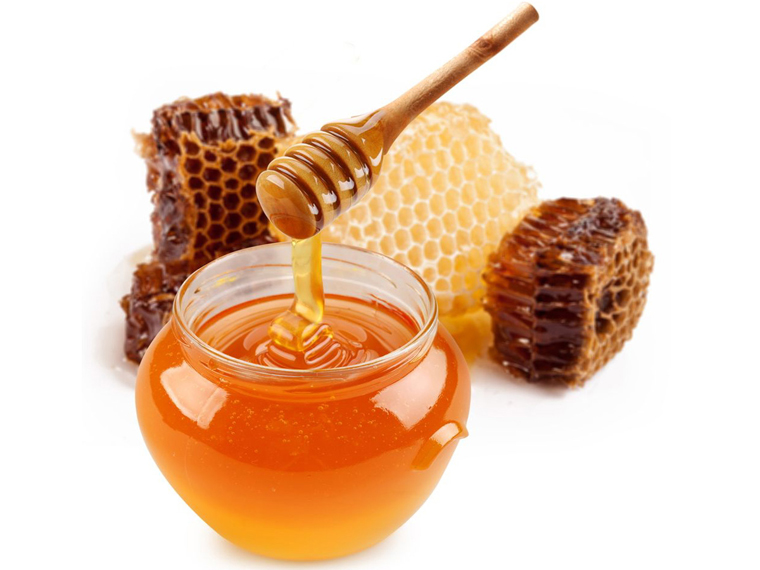
We are regularly advised to cut our consumption of sweet foods, but there’s something special about honey. Honey is the unique product of swarms of bees that cover a six-mile radius during nectar collection. Anything that takes so much work to make must be good! Honey is sweeter than sugar, with 65 calories per tablespoon, as opposed to white sugar’s 48. Calories apart it has some surprising health benefits.
What’s it good for?
- acne
- age sports
- allergies
- coughs
- insomnia
- laryngitis
- peptic ulcers
- sore throat
Honey is not a nutritional powerhouse. It contains trace amounts of B vitamins, amino acids and minerals, but it’s really no more nutritious than plain sugar. If honey gets attention from doctors, it’s for other reasons. Its thick syrupy texture makes it a natural for easing sore throat pain, especially when it’s added to hot lemon or a soothing tea such as chamomile.
But honey does much more. It kills bacteria and helps cuts and wounds to heal faster. It is a natural laxative. It appears to reduce the pain of stomach ulcers. And it is a quick-acting energy source that can reinvigorate tired muscles faster than you can say ‘Lucozade sport’. Scientists have actually found that athletes perform better when they eat a little honey.
A sweet antiseptic
Infection was the greatest health threat in the days before antibiotics. Even small cuts or grazes could turn deadly, which why doctors often carried a little honey in their black bags. Honey contains hydrogen peroxide and propolis, a compound in nectar that kills bacteria. Even today, when antiseptic creams are found in every medicine cabinet, some doctors believe that honey might be a superior wound dressing in some cases. Indeed, it works so well that a number of manufacturers sell honey-impregnated dressing for hard-to-hard wounds.
The high sugar content of honey pulls moisture from wounds and denies bacteria the moisture they need to survive. It also locks out harmful external contaminants. And because honey is inexpensive, it can be the ideal choice in countries without access to modern wound creams.